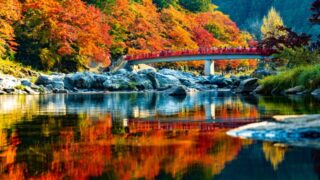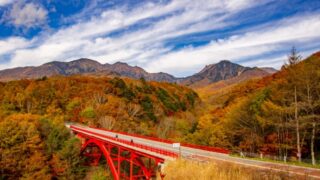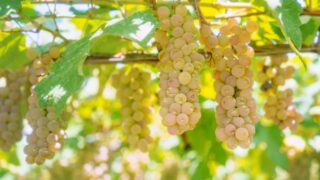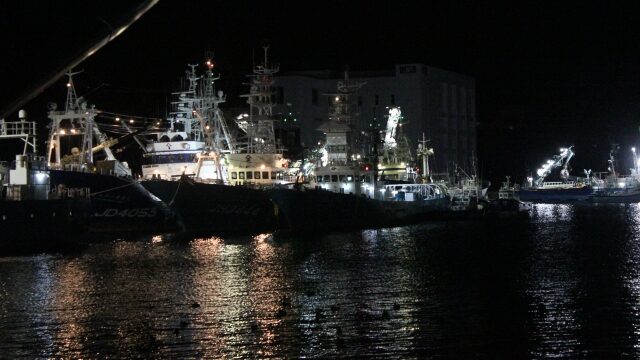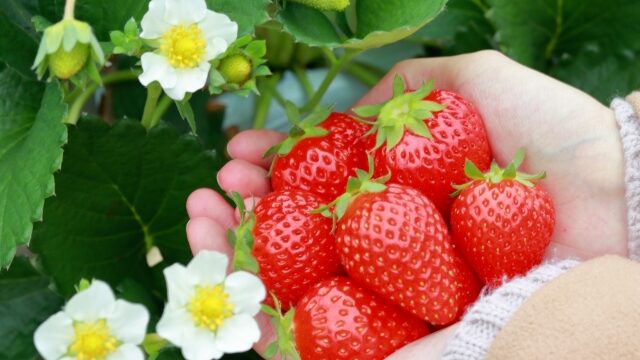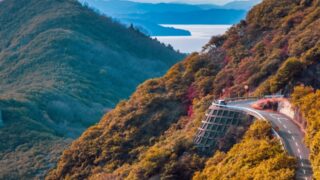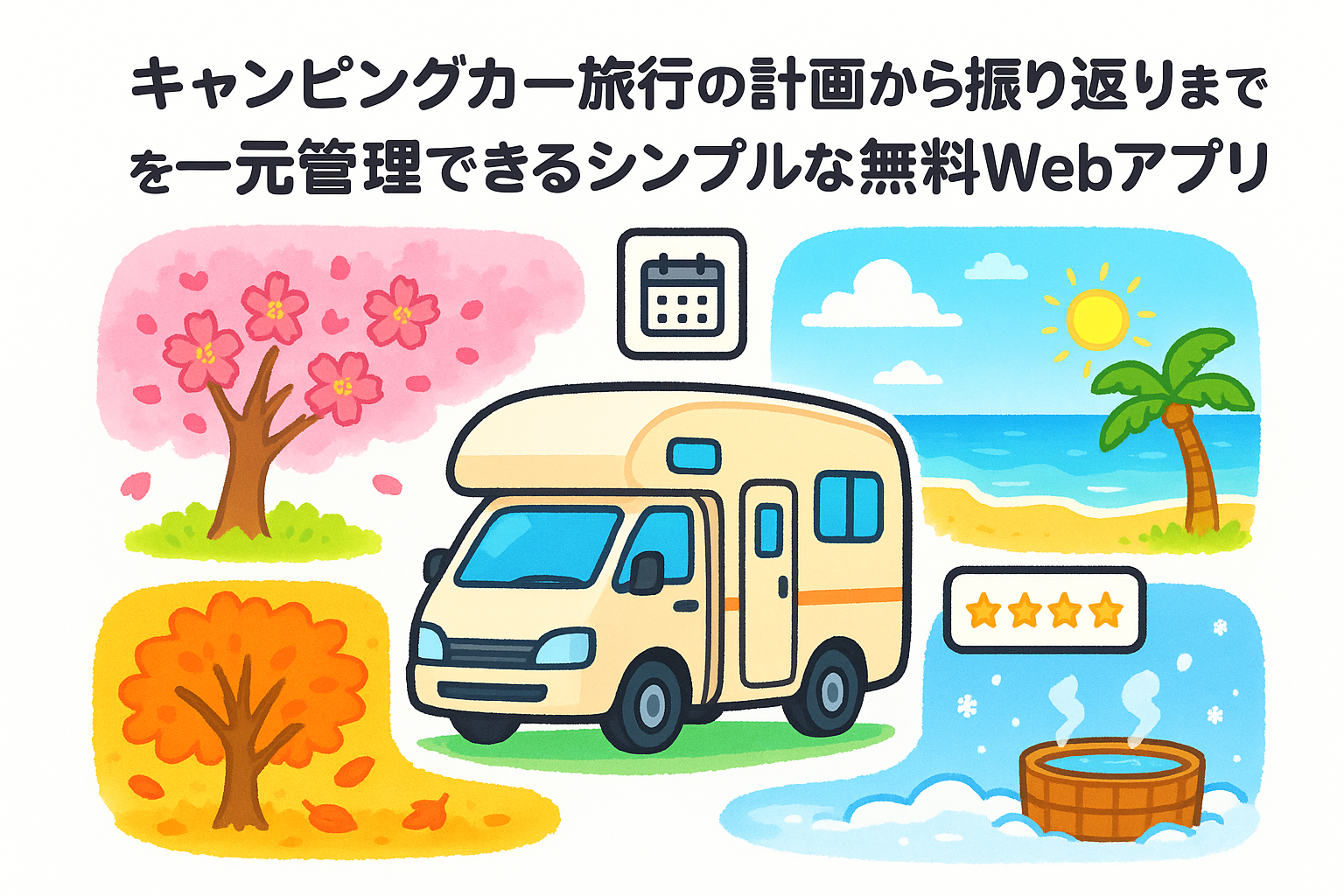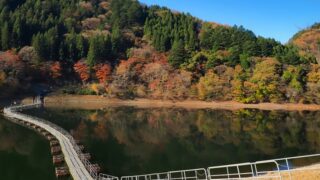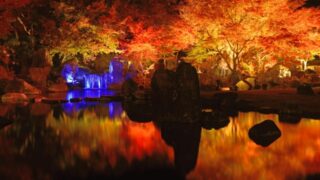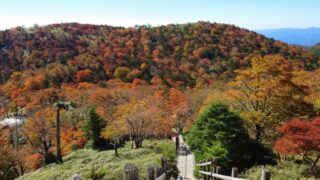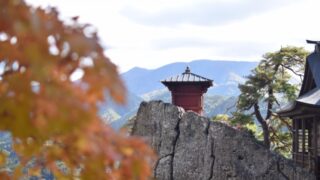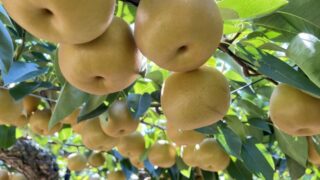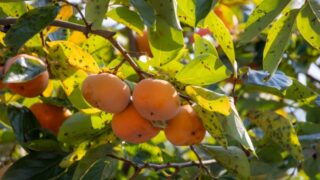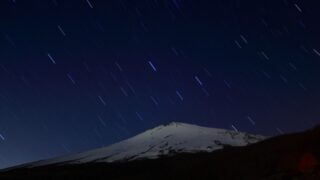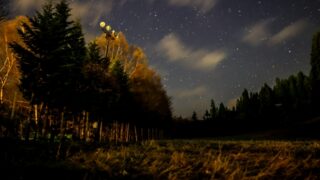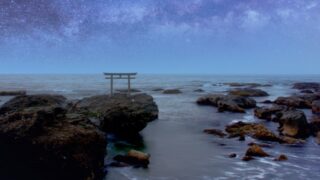Freedom and Stunning Views: A Luxurious Autumn Journey in Your Mobile Accommodation
The Kinki region in autumn is one of Japan’s premier foliage kingdoms, with diverse autumn leaf viewing spots scattered from ancient temples and shrines to rugged mountain valleys. The 2025 autumn foliage season is expected to be enjoyable for a long period of approximately 1.5 months, starting from high-elevation areas in mid-October through early December in lowland areas. The ideal travel style for chasing this vertical autumn foliage front is touring by camping car.
Silent valleys wrapped in early morning tranquility, seas of clouds dyed by sunset, starry skies filled with stars—the luxury of freely using “time” that cannot be experienced in regular tourism. This is the true essence of camping car travel. Without being bound by accommodation reservations, you can move flexibly according to peak foliage times, monopolize spectacular views shrouded in morning mist and star-filled night skies. The great attraction is also being able to relax in your vehicle without worrying about moving after being refreshed at hot springs. In this article, we introduce carefully selected autumn foliage spots across five Kinki prefectures that maximize the experiential value unique to camping cars.
🍁 2025 Kinki Region Autumn Foliage Calendar
Check peak viewing periods from mid-October to early December
| Spot Name | Mid Oct |
Late Oct |
Early Nov |
Mid Nov |
Late Nov |
Early Dec |
|---|---|---|---|---|---|---|
| 📍 Nara Prefecture | ||||||
|
Mt. Odaigahara
🏔️ Kinki’s earliest foliage
|
🍁 | |||||
|
Kaochi Valley
🏞️ Columnar joints & foliage
|
🍁 | 🍁 | 🍁 | |||
|
Mitarai Valley
💧 Kinki’s finest valley beauty
|
🍁 | 🍁 | ||||
| 📍 Wakayama Prefecture | ||||||
|
Koya-Ryujin Skyline
⭐ Stargazing sanctuary
|
🍁 | 🍁 | 🍁 | |||
|
Kizetsu Valley
🏔️ Valley & red contrast
|
🍁 | 🍁 | 🍁 | 🍁 | 🍁 | |
| 📍 Shiga Prefecture | ||||||
|
Biwako Valley
🏔️ 1,100m spectacular view
|
🍁 | 🍁 | ||||
|
Ibuki Mountain Driveway
🚗 Elevation difference foliage
|
🍁 | 🍁 | ||||
|
Hyakusaiji Temple
⛩️ 81ha grounds foliage
|
🍁 | 🍁 | 🍁 | |||
|
Metasequoia Avenue
🌳 2.4km brick-colored avenue
|
🍁 | 🍁 | ||||
| 📍 Kyoto Prefecture | ||||||
|
Kurama-dera・Kifune Shrine
⛩️ Mountain trail foliage
|
🍁 | 🍁 | ||||
|
Nariaiji Temple
🌅 Mountain temple overlooking Amanohashidate
|
🍁 | 🍁 | ||||
| 📍 Hyogo Prefecture | ||||||
|
Takeda Castle Ruins
🏯 Castle in the sky & sea of clouds
|
🍁 | 🍁 | 🍁 | |||
|
Ritsuunkyo Valley
🏞️ Valley overlooking Takeda Castle
|
🍁 | 🍁 | ||||
📝 Important Notes
- Peak viewing times may vary depending on weather conditions. Please check the latest information in advance.
- When visiting by camping car, we recommend checking parking availability and road width in advance.
- Mountain areas get cold at night, so be sure to prepare adequate cold weather protection.
- Follow nature conservation rules within national parks.
※ Scroll the table vertically and horizontally to view the entire content
【Shiga】Sky Terrace and Golden Avenue—Spectacular Foliage Overlooking Lake Biwa
Biwako Valley: Foliage Carpet Viewed from 1,100m Elevation
A high-speed ropeway carrying 121 people reaches the 1,100m summit in about 5 minutes, revealing a magnificent panorama of Lake Biwa and a carpet of autumn foliage spread below. The typical peak viewing period is from late October to early November, when maples and mizunara oaks dye the mountain slopes golden.
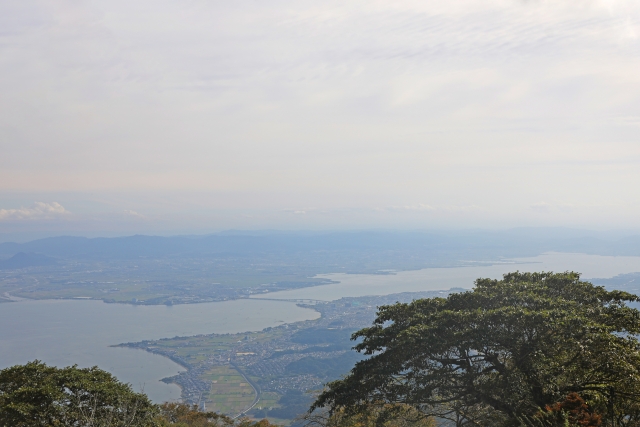
The advantage of camping cars is being able to avoid the crowded times on sunny weekends and holidays (10 AM to 2 PM) by arriving to catch the first upward ropeway departure (around 9:30 AM). The summit is 7-10 degrees cooler than the city, and with autumn temperature differences, if lucky, you can encounter magnificent seas of clouds. Watching the moment morning mist clears while holding a warm drink at Biwako Terrace Café 360—this is the real pleasure of camping car travel.
Metasequoia Avenue: 2.4km Avenue Dyed Brick Color
Along the prefectural road running through Makino Pick Land, approximately 500 metasequoia trees are planted over a stretch of about 2.4km, forming a landscape selected as one of “New 100 Best Japanese Street Trees.” The peak viewing period is typically from late November to early December, turning the warm hue locally described as “brick color.”
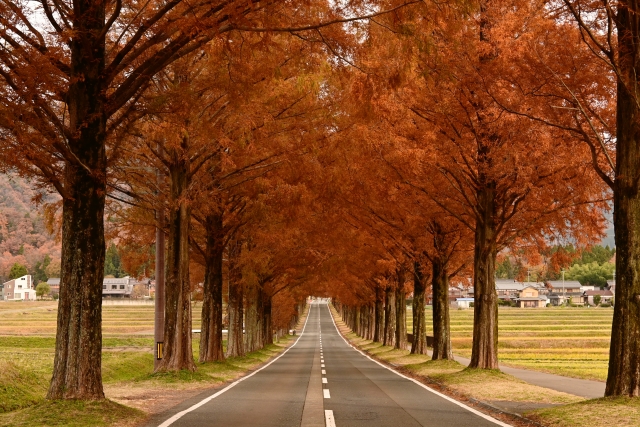
While there is no illumination implemented and only streetlights at night, with a camping car you can target the avenue illuminated by morning sun at dawn. Using the free parking lot at Makino Pick Land, the optimal time to photograph the harmonious view with the distant Nozaka mountain range—showing expressions of spring budding and fresh greenery, summer deep green, autumn foliage, and winter bare trees through the four seasons—is right after sunrise with oblique light.
Ibuki Mountain Driveway: Multilayered Foliage Enjoyed Through Elevation Difference
The Ibuki Mountain Driveway is a famous mountain drive spot where you can enjoy layers of foliage woven by beech, oak, and maple while overlooking Lake Biwa from the 900m parking lot observatory. Peak viewing is from late October to early November. With a camping car, you can stay at the summit parking lot until dusk and fully enjoy the collaboration of sunset over Lake Biwa and autumn foliage.
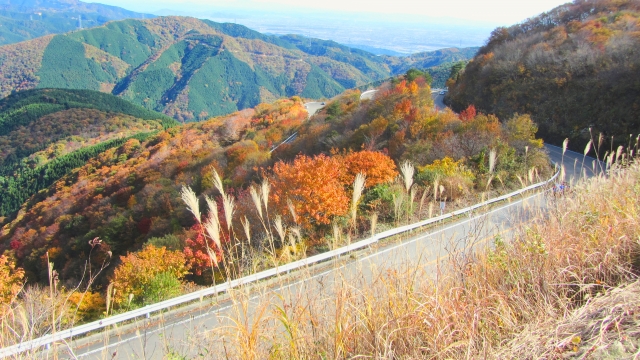
Hyakusaiji Temple: Brocade Autumn Temple Dyeing 81ha Grounds
Hyakusaiji Temple is located mid-slope of the Suzuka Mountains, a scenic spot where vast 81ha grounds are dyed with autumn foliage. Peak viewing is from early to late November. Illumination is also planned for 2025. Being able to rest comfortably in your camping car after special nighttime viewing is a great advantage.
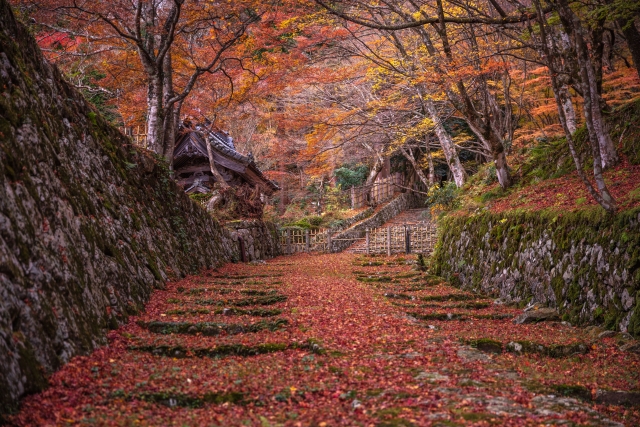
【Kyoto】Amanohashidate and Ancient Temple Autumn—Japan Sea Spectacular Views and Mountain Temple Serenity
Nariaiji Temple: Mountain Temple Foliage Overlooking Amanohashidate
The mountain temple Nariaiji overlooking Amanohashidate features a picturesque “bird’s-eye view × temple” composition with the five-story pagoda and maple trees. The 2025 autumn foliage peak viewing is from mid to late November, with nighttime illumination also planned for November 15-16.
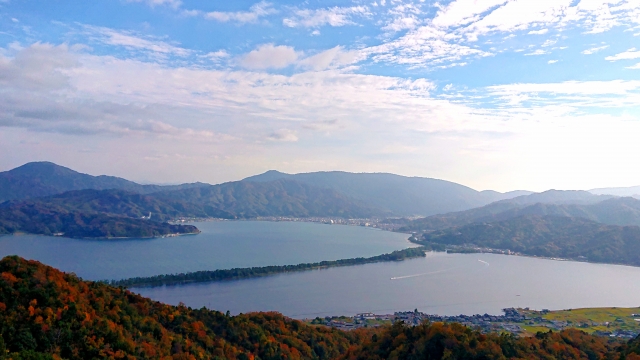
From Kasamatsu Park (Amanohashidate Ascending Dragon View), the evening view is excellent, and being on the Japan Sea side, there is little light pollution, making star photography possible. With a camping car, you can warm up at Amanohashidate Onsen “Chie no Yu” (12:00-21:00, fee 800 yen) during the day, scout the evening view, photograph Nariaiji’s illumination with a tripod, then stay overnight at a nearby michi-no-eki—realizing such a luxurious schedule. “Chie no Mochi” at the temple gate operates from 8:00 to 17:00, allowing you to enjoy comparison tasting.
Kurama-dera・Kifune Shrine: Autumn Foliage Hiking Along Mountain Ancient Paths
Kurama-dera and Kifune Shrine in Kyoto’s inner sanctum are ideal spots for autumn foliage hiking along the approach paths. Peak viewing is around November, and Kifune Shrine is wrapped in a fantastical atmosphere with grounds illumination. The charm of camping cars is being able to immediately rest in your vehicle after enjoying the mountain crossing hike from Kurama to Kifune.
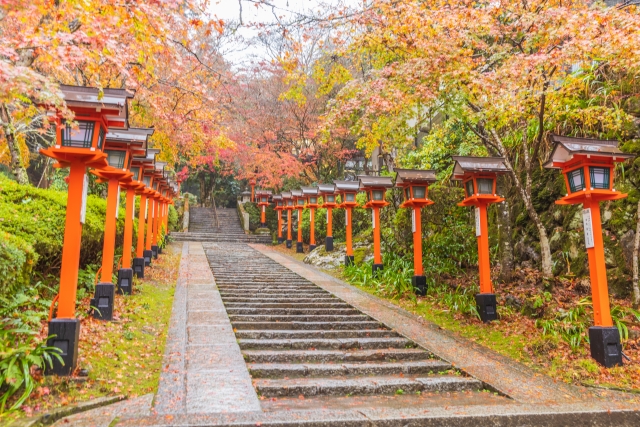
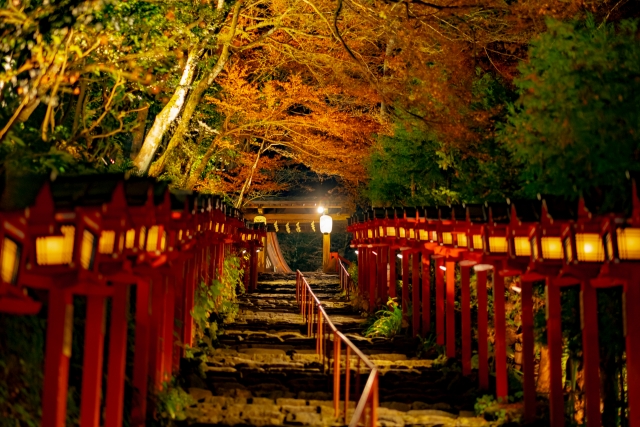
【Hyogo】Castle in the Sky Floating on Sea of Clouds—Takeda Castle Ruins Autumn Spectacular Views
Takeda Castle Ruins: “Japan’s Machu Picchu” Autumn Scenery
Takeda Castle Ruins, called “Japan’s Machu Picchu,” is a mountaintop castle ruin with peak viewing from early to late November. The collaboration of early morning sea of clouds and autumn foliage is considered the prime photography target.
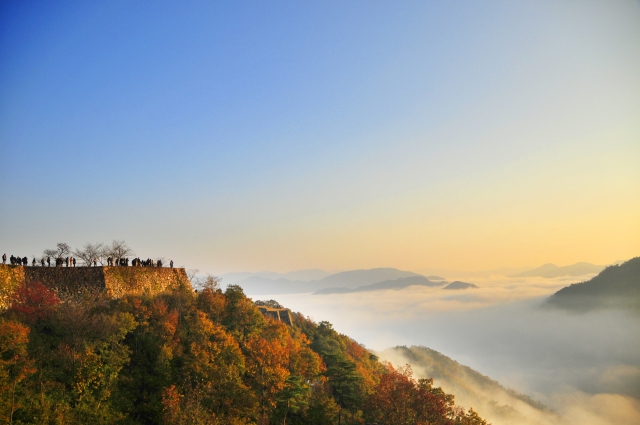
The greatest advantage of camping cars is being able to wait on-site during the early morning hours of 4-6 AM when seas of clouds are most likely to occur. By sleeping overnight at nearby michi-no-eki or parking lots, you can deploy when seas of clouds form while monitoring weather conditions. This “ambush” strategy, difficult with regular accommodation, is the essence of camping car travel.
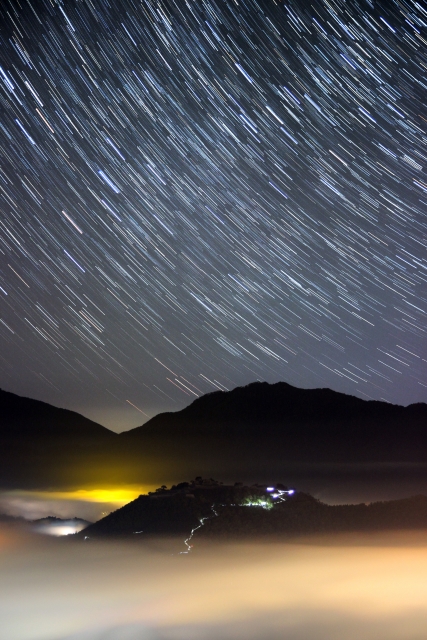
Ritsuunkyo: Valley Observatory Overlooking Takeda Castle
Ritsuunkyo is a valley observatory overlooking Takeda Castle, with peak viewing from mid to late November. The collaboration of autumn foliage and sea of clouds is popular as a scenic spot. When visiting both Takeda Castle Ruins and Ritsuunkyo, camping cars offer high mobility, allowing an efficient route of photographing Takeda Castle from Ritsuunkyo in the morning and climbing the castle ruins in the afternoon.
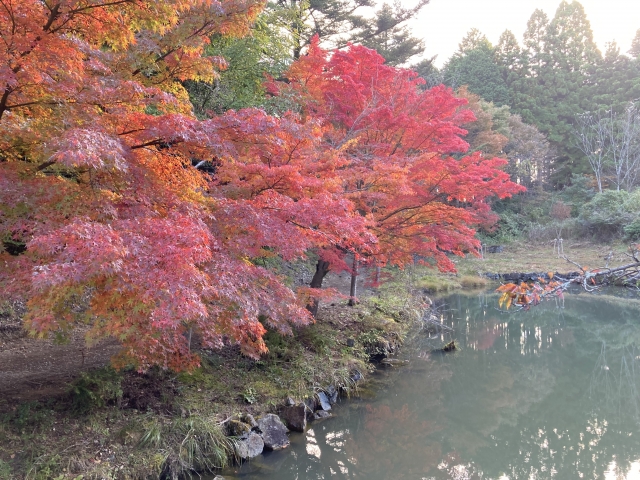
【Wakayama】Deep Crimson of Kii Mountains and Heavenly Stars—Koyasan Area Foliage and Stargazing
Kizetsu Valley: Valley and Red Contrast
Kizetsu Valley is a valley designated as part of Yoshino-Kumano National Park, with peak viewing from late October to early December. The contrast between red-turning trees like maples and the impressive rocky valley walls is magnificent.
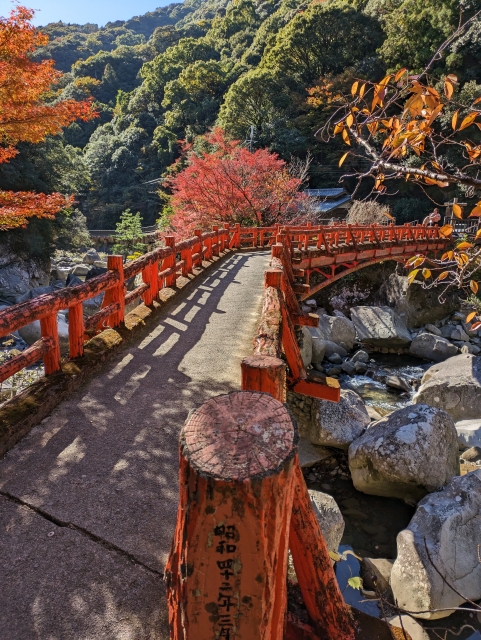
Iruka Onsen becomes a candidate for combining with valley autumn foliage visits. With a camping car, you can relax inside your vehicle after refreshing yourself at the hot springs. Being able to go directly to hot springs without worrying about moving after enjoying valley beauty walks is a great advantage.
Koya-Ryujin Skyline: Heavenly Drive and Stargazing Sanctuary
The Koya-Ryujin Skyline (National Route 371) is a mountain route where you can enjoy driving while viewing colorful autumn foliage. The foliage peak viewing is from late October to mid-November, and from the observatory at “Gomasan Sky Tower” along the way, a magnificent view spreads from mid-slope of Mount Gomadan to the Shikoku mountain range.
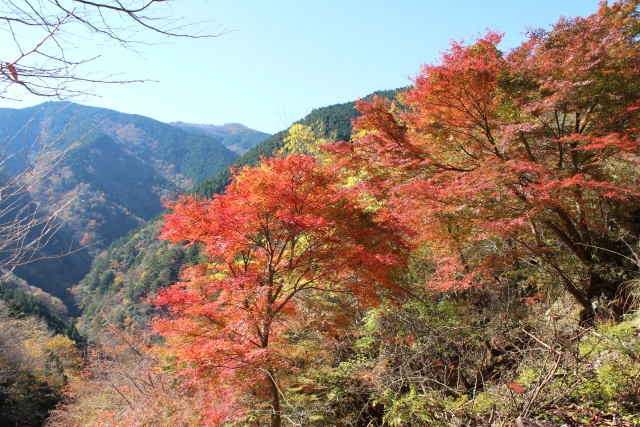
And the highlight of camping car travel is Tsuruhime Park along the Koya-Ryujin Skyline. It is considered one of Kinki’s premier spots for combining autumn foliage, sunset, and nighttime astronomical observation. With extremely little light pollution, it is highly rated by astrophotography enthusiasts as a shooting location, with parking lots at the park entrance and summit used as observation spots.
For nighttime astronomical observation, strict cold weather protection is necessary as temperatures on the mountain drop sharply. With a camping car, you can warm up inside the vehicle while timing your photography based on sky conditions. Around Tsuruhime Park, mobile phone reception is uneven—AU connects relatively easily, but Docomo and Softbank often lose signal, so preparing offline maps in advance is essential.
The Koyasan area has many wagashi shops influenced by shojin ryori (Buddhist vegetarian cuisine) culture, particularly Fuzen Honten’s “Nama-fu Mochi,” known as a famous confection rooted in sacred site history and food culture. We recommend stopping by during autumn foliage drives and savoring them slowly inside your camping car.
【Nara】Kinki’s Earliest Foliage and Valley Beauty—Autumn Woven by Primeval Forests and Clear Streams
Mt. Odaigahara: Kinki Region’s Autumn Foliage Season Opening
Mt. Odaigahara in Nara Prefecture, due to its high elevation, is one of the first places in the Kinki region where autumn foliage begins, typically reaching peak viewing around mid-October. The main trees are maples and beech, and the view from the vast mountaintop is magnificent.
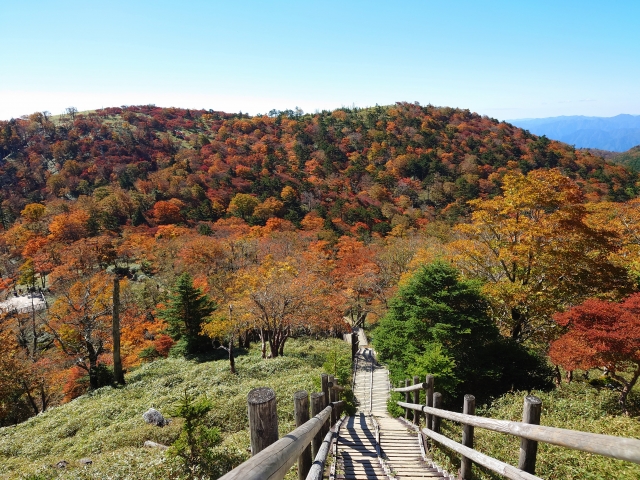
Mt. Odaigahara is within Yoshino-Kumano National Park, where you may encounter wildlife such as deer, serow, and monkeys. For observation and photography in national parks, based on Ministry of Environment guidance, photography or observation methods that affect wildlife habitats must follow methods specified for each use adjustment area.
With a camping car, a “foliage front traverse route” is possible, starting autumn foliage touring from Mt. Odaigahara in mid-October and progressively moving to lower elevation areas. Being able to chase peak foliage constantly for up to 1.5 months is unique to camping car travel with high mobility freedom.
Mitarai Valley: Kinki’s Finest Valley Beauty
Mitarai Valley boasts Kinki’s finest valley beauty, with peak viewing from early to mid-November. It’s considered an excellent location for photographing waterfalls and autumn foliage from walking paths and suspension bridges.
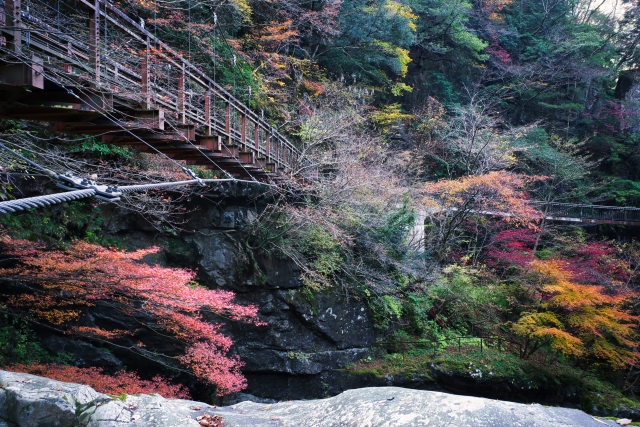
Walking paths are maintained along the river, so strolling or hiking while viewing the scenery is recommended, and a “Momiji Festival” is also held during peak viewing season. With a camping car, you can monopolize the valley beauty in the fresh morning air during times when other tourists are few.
Kaochi Valley (Okukaochi Valley): Columnar Joints Cliff and Autumn Foliage
Okukaochi Valley (Okukōchidani) is the area along the Soni River from Ochiai to Nagano in Soni Village, Nara Prefecture, where strange rocks line both sides of the river. The most impressive is Kotaro Rock, a massive cliff about 700m wide and 200m high. During autumn foliage season, maples cover Kotaro Rock, creating unique valley beauty. Peak viewing is from early to late November, overlapping with the peak viewing of Soni Plateau’s pampas grass, where you can also enjoy the fantastical scenery of silvery waves of pampas grass swaying in the wind.
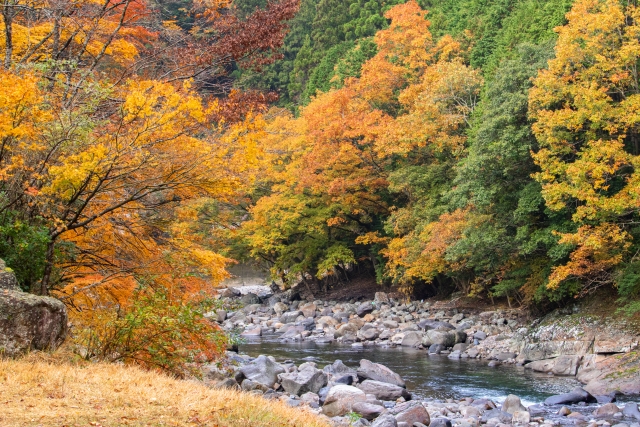
The columnar jointed rock walls continuing for about 8km from upstream of Shorenji Dam, as if cleaved by an axe, are popular as a driving course. With a camping car, you can enjoy driving along the valley while freely stopping at favorite photography points. Access is from Kintetsu Osaka Line Nabari Station by bus bound for Yamakasu-nishi to Ochiai or Kotaro Rock, then 5 minutes on foot, but since public transportation is limited, this is an area where camping car mobility shines.
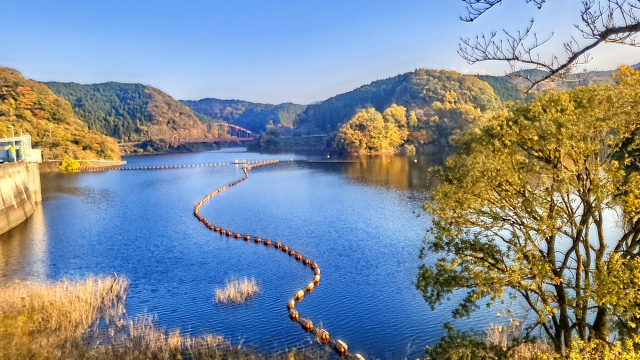
Camping Car Utilization Tips for Successful Journey—Making Time Your Ally in Foliage Photography
To secure the best lighting conditions and serene atmosphere for autumn foliage, a very effective strategy is either arriving before sunrise in early morning or targeting right after the start of special nighttime viewing. With a camping car, you can sleep overnight near the site from the night before, completely avoiding tourists who concentrate on weekends and holidays during the day, especially from 10 AM to 3 PM, at popular spots like Kyoto and Hikone.
As a water mirror photography technique, when targeting reflections on water surfaces like Genkyu-en Garden or Toji Temple’s Hyotan Pond, windless early mornings or illumination times are optimal. To emphasize water surface reflections, using PL (polarizing) filters or ND (neutral density) filters and attempting long exposures can capture mirror-like smooth spectacular views.
For starry sky photography equipment, when planning astronomical observation or photography at places like Tsuruhime Park, wide-angle lenses, sturdy tripods, and remote releases are essential. Since mountaintop nights are extremely cold, in addition to regular cold weather clothing, thorough preparation including hand warmers, insulation sheets, and condensation prevention measures (lens heaters, etc.) is indispensable for high-quality photography.
Autumn Foliage Attractions and How to Enjoy Each Prefecture
Carefully Selected Spots Across Kinki’s 5 Prefectures to Tour by Camping Car
🚐 Camping Car Utilization Points
Early Morning Photography Freedom
Wait on-site from the night before for serene foliage photography avoiding crowds
Starry Sky × Foliage Double Experience
Enjoy astronomical observation at mountain locations like Tsuruhime Park with minimal light pollution
Relax After Hot Springs
Rest in your vehicle without worrying about moving after being refreshed at day-trip hot springs
Chase the Foliage Front
Move flexibly according to peak viewing from mid-October to early December
📝 Important Notes
- Peak viewing times may vary depending on weather conditions. Check the latest information in advance.
- When visiting by camping car, check parking availability, road width, and vehicle height restrictions in advance.
- Mountain areas get cold at night. Prepare adequate cold weather and condensation prevention measures (lens heaters, etc.).
- Follow nature conservation rules in national parks and maintain appropriate distance from wildlife.
- Mobile phone signals may not reach mountainous locations like Tsuruhime Park. Prepare offline maps.
🍁 Kinki Camper Van Autumn Foliage Journey – Frequently Asked Questions
Conclusion—Weaving Your Own Autumn Foliage Story in Mobile Accommodation
Touring autumn foliage by camping car is not just sightseeing, but “travel artistry” freely manipulating time and space. Early morning serenity, dusk’s lingering atmosphere, nighttime starry skies—freedom unbound by timetables or accommodation curfews allows you to experience Kinki’s autumn foliage more deeply and richly.
Autumn foliage in the Kinki region starts in high-elevation mountain areas, transitions to plains, urban areas, and lakesides, effectively utilizing a long period of approximately 1.5 months. From Mt. Odaigahara in mid-October to Kyoto’s historic gardens in early December, while chasing the foliage front, being refreshed at hot springs, moved by starry skies, and savoring local confections.
This autumn of 2025, why not fully enjoy Kinki’s brocade autumn to your heart’s content in your own mobile accommodation? The autumn foliage viewed from car windows will surely become treasures of your life.
[2025 Latest] Complete guide to spectacular autumn foliage across 5 Kinki prefectures! Biwako Valley, Takeda Castle Ruins, Mt. Odaigahara, and more. Mid-October to early December peak viewing calendar, camper van overnight camping, roadside stations, hot springs info, early morning photography, sea of clouds hunting, stargazing techniques, and local gourmet coverage. Chase the foliage front for 1.5 months with a traverse route that makes time your ally for a luxurious autumn journey.